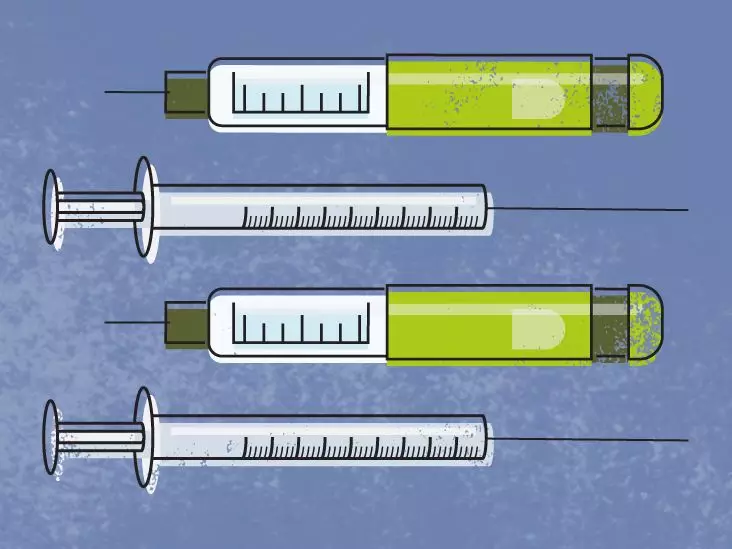In the challenging landscape of cancer treatments, Opdivo Qvantig emerges as a beacon of hope. This innovative medication, primarily used for immunotherapy, aims to harness the body’s own immune system to combat various types of cancer. However, understanding the nuances of its dosage and administration is crucial for patients and healthcare providers alike. The prescribed dosage can greatly vary depending on the specific type of cancer, the patient’s overall health status, and whether the treatment is used in conjunction with chemotherapy. In this article, we delve deeply into the specifics surrounding Opdivo Qvantig to foster better understanding and empower patients in their treatment journeys.
The Personalization of Dosage
The dosing regimen of Opdivo Qvantig is far from one-size-fits-all; it is tailored to meet the intricate needs of each patient based on several factors. Key considerations include the specific cancer being treated and the treatment goals set by the oncologist. For instance, patients undergoing treatment for kidney cancer typically receive 600 mg of nivolumab and 10,000 units of hyaluronidase every two weeks, or 1,200 mg and 20,000 units every four weeks. This adjustment reflects the understanding that each type of cancer reacts differently to treatment, requiring healthcare providers to curate a precise regimen for effective outcomes.
The Medication’s Versatility
Opdivo Qvantig is not limited to just one type of cancer—it has a diverse array of indications. From kidney cancer to melanoma, non-small cell lung cancer (NSCLC), and bladder cancer, each condition demands nuanced dosing strategies. For instance, the dosing for NSCLC differs significantly based on whether the patient is preparing for surgery. This highlights the drug’s versatility and adaptability, as it can be tailored to align with specific cancer pathways and patient responses. By adjusting the dosage depending on the treatment plan—whether it incorporates pre-surgery chemotherapy or focuses solely on immunotherapy—healthcare professionals can optimize the patient’s chance for recovery.
Administration Methods: Convenience Meets Care
Ease of administration is another critical aspect of Opdivo Qvantig. Delivered as a subcutaneous injection, healthcare professionals usually administer the medication at the clinic, hospital, or even at home under specific circumstances. The injection site is typically the abdomen or thigh, and the entire process is designed to be quick, lasting only around 3 to 5 minutes. This expedient delivery method can enhance the overall patient experience, reducing the anxiety that often accompanies cancer treatment sessions. Empowering patients with options regarding where and how they receive their treatment is a significant step toward enhancing their comfort and adherence.
Continuous Monitoring and Adjustments
An integral aspect of cancer treatment is the continuous assessment of the patient’s response to medications. With Opdivo Qvantig, doctors often schedule regular tests and scans throughout the treatment course to evaluate the effectiveness of the therapy. It is essential to remain adaptable; should adverse effects arise or if the desired results are not achieved, oncologists may adjust the treatment plan. This responsiveness to the patient’s needs embodies the patient-centric philosophy that is increasingly pivotal in modern medicine.
Long-Term Commitment and Expectations
Patients embarking on their journey with Opdivo Qvantig should be prepared for a long-term commitment. Typically, treatment may extend over one to two years, depending on individual responses and the severity of the cancer. It is a journey characterized by both hope and uncertainty, necessitating open lines of communication between patients and their healthcare providers. While Opdivo Qvantig begins to work from the first dose, the timeline for visible results can vary significantly. This underscores the importance of patience and trust in the treatment process; sometimes, it takes time for the immune system to fully engage and combat cancer effectively.
The Role of the Patient in Their Treatment Journey
At its core, understanding Opdivo Qvantig’s dosage and administration empowers patients to take an active role in their treatment journey. This knowledge serves not only to alleviate anxiety surrounding the unknowns of cancer treatment but also enhances their partnership with healthcare providers. By fostering a sense of agency and understanding, patients can more confidently navigate their treatment options and engage in productive discussions with their oncologists.
The intricacies of Opdivo Qvantig represent more than just a drug regimen—they symbolize a collaborative effort between patients and healthcare professionals pursuing a common goal: overcoming cancer. It is this shared journey that creates a stronger bond, builds hope, and, ultimately, can lead to triumphant outcomes in the battle against cancer.

